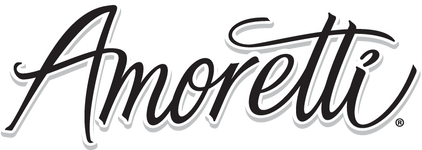
Murkwood Brewing: Second Breakfast Porter with French Toast & Cinnamon Bun Artisans
Our homebrew friends at Murkwood Brewing in Northern California agreed to create a few special brews especially for us to show you how to incorporate Amoretti products in your beer. (Check out our extensive list of TTB approved flavors!)
We started off with Cottonwood Blonde using our Cranberry Artisan. And since we get lots of questions about Artisan Natural Flavors, we're continuing this series with a Cinnamon French Toast Porter using our Cinnamon Bun and French Toast Artisans. A fairly dry and lighter English-style porter (named Second Breakfast), we're sure any hobbit would approve of the spiced, maple sweetness these two Artisans lend our dark beer. Cheers! Makes one 5 gallon batch.
Ingredients
- 1968 London ESB Ale Yeast (Wyeast)
- 680g Great Western American Pale Ale Malt
- 280g Caramel Munich Malt
- 170g Chocolate Wheat Malt
- 230g Black Patent Malt
- 1600g Light Dried Malt Extract, divided
- 35g Kent Goldings Hops (5%AA) - 60 minutes
- 7.1g Kent Goldings (5%AA) - 5 minutes
- 1 tablet Yeast Nutrients - 10 minutes
- ½ tablet Wirfloc - 5 minutes
- 7oz (198g) Amoretti® French Toast Artisan
- 3.5oz (99g) Amoretti® Cinnamon Bun Artisan
- 4oz (113g) Corn Sugar
- 6 gallon brew pot
- 2 gallon (8 quart) pot
- 1 gallon (4 quart) pot
- scale
- thermometer
- large colander
- 1-2 grain bags
- no-rinse sanitizer
- hydrometer
- airlock + rubber stopper
- primary fermentor
- bottling bucket
- glass swing-top bottles or glass bottles and caps + capper
Directions
- Pull yeast from the fridge to come up to room temperature.
- Warm 4.1 quarts of water in a pot (8-qt/2-gal capacity) or your brew pot. Pour the milled grains (Great Western, Caramel Munich, Chocolate Wheat, and Black Patent) into a grain bag over the pot and submerge. Hold the mash at 152℉ for 60 minutes.
- Meanwhile, heat 2 quarts of water to 170℉ in a second pot, this will be the sparge water.
- Put a large colander over the brew pot and put the grain bag in it. Pour the wort over the grain bag to catch any loose grains. Pour the sparge water over the grains to rinse out the fermentable sugars. Add water to bring the wort volume up to 3 gallons. Discard spent grains or set aside for another use.
- Stir in roughly ⅓ of the malt extract (Light Dried Malt) and bring the wort to a boil. Do not let the wort volume drop below 2.5 gallons, top off with boiling water if necessary.
- When the wort comes to a boil and the hot break begins, add the first hop addition (35g Kent Goldings) and set a timer for 60 minutes. The grain bag may be used to hold the hops during the boil to remove the need for filtering later.
- When the timer reaches 15 minutes remaining, add remaining malt extract. At 10 minutes, add the yeast nutrients. At 5 minutes, add 7.1g Kent Goldings and Wirfloc tablet.
- NOTE: Everything that touches the wort after the boil MUST be sanitized to prevent infection.
- Chill the wort to 68℉ and transfer to sanitized primary fermentor. Add distilled water to bring the volume up to 5 gallons and the gravity down to 1.047, splashing as much as possible to aerate the wort. Pitch the yeast and ferment at 68℉ for 7 days or until fermentation stops.
- Remove about 2 cups wort into a sanitized bowl. Stir in French Toast & Cinnamon Bun Artisans. Transfer to sanitized secondary fermentor along with remaining wort, minimizing slashing and air contact as much as possible.
- Continue fermenting another 7 days or until the gravity falls to 1.014.
- Boil 4oz corn sugar in 2 cups water for 10 minutes to sterilize. Set aside to cool, this is the priming sugar.
- Transfer beer and priming sugar to sanitized bottling bucket. Allow sediment to settle. Meanwhile, sanitize all bottles, bottling equipment, caps, etc. Fill bottles, leaving about 1 inch headspace, and cap.
- Allow about 1 week for beer to carbonate. Chill and enjoy!
- We've included the percentage of alpha acids for our hops if you'd like to switch in different varietals.
- We love Amazon as much as you but we HIGHLY recommend paying a visit to your local homebrew shop especially when you're just starting out. Not only will they have all the supplies you need to brew, they have a wealth of information and can answer any questions that may have come up while reading through this recipe.
- Some great learning resources we non-brewers utilized were this video, Brew Your Own's Big Book of Homebrewing, and The Complete Joy of Homebrewing. Check out your local library as well, there are tons of awesome homebrew books out there these days.
- SMALL MASH - that'll be our second pot with the grains
- WORT - unfermented beer
- SPARGE WATER - water used to rinse grains after mashing
- HOT BREAK - when proteins in the wort coagulate during the boil





Leave a comment